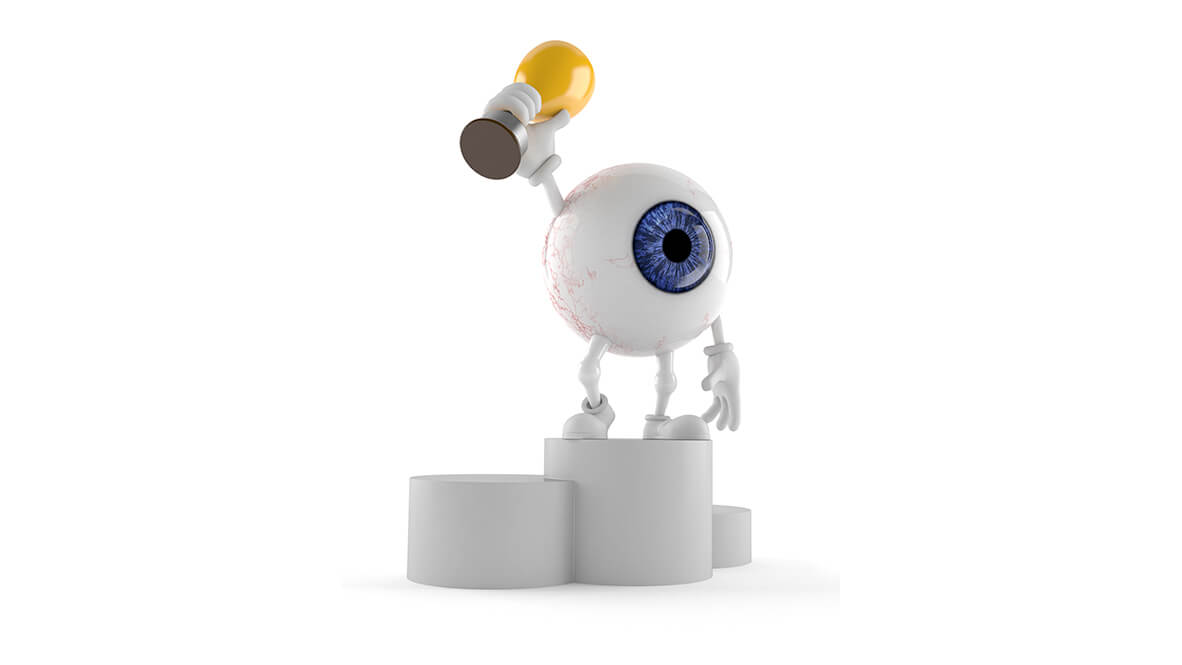If you spent a reasonable amount of time procrastinating on the Internet recently you may have come across a story of a 5,000-year-old, six feet tall priestess who was found preserved with a golden eye. Portrayed as breaking news, many commentators and netizens motivated by the rather difficult last 18-months many of us experienced extolled the archeologists not to remove the prosthesis from its final resting place. Imagine, some postulated, the chaos and calamity that could befall us all if we disturbed this mighty giantess’s final resting place.
Like all stories that involved alleged ancient curses, this turned out not to be true. Far from breaking news, the priestess was uncovered on an archeological dig in Shahr-e Sukhteh, located in the far east of Iran, all the way back in 2006. So while we cannot report on an Indiana Jones-esque story (and frankly we’re a little disappointed that that’s the case), it did get us thinking about the ocular implant itself, as the skeleton actually offered a remarkable discovery: the world’s first known artificial eye.
No Princesses’ Curse Today (Sadly)
Reading the description of this mighty woman’s gold eye is utterly remarkable, as according to the archeologists who found her, it was covered in a thin layer of gold, and made of incredibly light material, most likely bitumen paste. Her skull had minuscule holes drilled into either side of her eye socket, through which a golden thread could hold the eyeball in place. Imagine that, not on the pain of undergoing such a procedure without anesthetic, but also the terrible majesty of her appearance — she would have towered over all around her as the average height was almost a foot shorter.
So, yes, we cannot report that all the world’s current ills will end if this glorious monarch is given her golden eye back, but we do get to have a more in-depth look at historical artificial eyes. The dating of the Shahr-e Sukhteh discovery at 2900 and 2800 BCE was a remarkable moment in archeology. This is because it pushed back the date of the first recorded ocular implant by thousands of years. While prostheses may have been created in the years following our priciness, the first known recorded instance was previously attributed to around the 5th century BCE when Roman and Egyptians used painted clay attached to cloth to tie around an empty eye socket.
And that was it, according to most historians, until 2,000 years later when Frenchman Ambroise Paré (1510-1590) described a prosthetic eye that was fastened to the end of a metal rod which bent around the back of the head to hold the eye in place. A century later, Venetian glassblowers were making more realistic prosthetic eyes from glass, and while they were beautiful, they were also very easily damaged. In the 18th century, Paris became the epicenter of artificial eye production in Europe, with glass, enamel and even metal used in production (though the latter was often ill-favored as metal eyes repelled tear fluid and lost their brightness).1
Silver Linings in Global Conflict

It was the Germans who took the next step in development as glass-blowing techniques improved significantly during that country’s industrial revolution in the 19th century. In 1880, Hermann Snellen, a Dutch eye surgeon, developed the “Reform” eye in response to an increase in the number of enucleations being carried out following the introduction of anesthesia and asepsis. However, production remained focused in Germany, and such was the high demand for artificial eyes from that country, that at the outset of WWII, the British Royal Navy dental technicians investigated the use of (poly)methyl methacrylate (PMMA) for prosthetic eyes as they no longer had access to the central European market.
PMMA became the standard for artificial eyes during the decades following WWII because it proved to be more durable than glass. The material’s malleability ensures that increased comfort could be possible for patients, and the quality of design was improved to make ocular implants more subtle than ever before. Now, thanks to AI, VR, and other emerging technologies, imagine where artificial eyes will be in the near future.
You can trace this development all the way back to a six-foot-tall princess living in a remote part of western Iran with a golden eye. Now that’s enlightening.
References
1. Pine K, Sloan BH & Jacobs RJ. History of Ocular Prosthetics. Clinical Ocular Prosthetics. 10.1007/978-3-319-19057-0_11.



